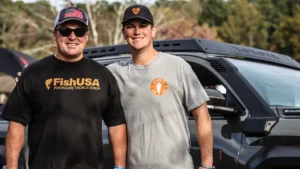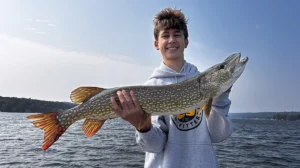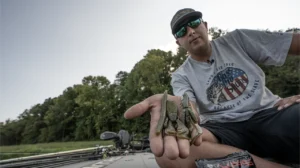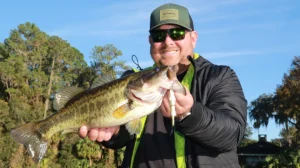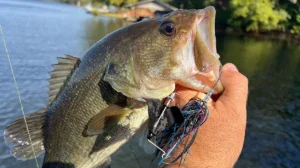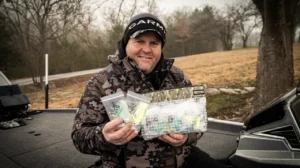Ever wondered why, year after year, some your biggest bass seem to chomp the smallest lures you throw? Why those big old largemouths won’t leave you alone when all you want to do is catch crappies? And why, even when the water’s cold or the bite’s completely off, smallmouth bass continue munching those tiny little baits with aggression? Basically, why do micro baits work on bass
Every season, but especially in the cool-water periods of winter and spring, micro baits from 1- to 3-inches deliver consistent if not occasionally spectacular bass bites. And as you’ve probably already discovered—although you’ll catch plenty of smaller fish—some of the bass will be those 3- to 5-pound footballs.
When Bass Bite Small Stuff
Turns out, bass of all sizes feed on small stuff—invertebrates like baby crayfish, insect larvae and tiny minnows—much more often than we realize. One study of largemouth bass diets, for example, revealed that among a sample size of 43 adult bass, 30 of their stomachs contained invertebrates (insects and larvae), while only 19 contained fish; or 257 total invertebrates versus 118 fish. A separate study of smallmouth bass found that among 95 bass stomachs containing food, 58 contained small crayfish, while only 13 held fish.
Unquestionably, while bass of both species derive greater caloric value and growth from a diet of larger baitfish, invertebrates and young fish (including bass fry) can sustain bass during cool-water periods, while heartier food is scarce.
Late winter through spring is one phase when bass may key on colonies of freshwater invertebrates as a means of maintenance feeding, nourishing themselves until baitfish begin to hatch. Invertebrates such as mayfly and midge larvae and aquatic worms known as oligochaetes can all figure prominently into bass feeding. As summer approaches, newly hatched clouds of baby gamefish, shad, shiners and bullheads enliven the menu.
Matching Movement Over Shape
As predatory opportunists, bass eat them all. And yet, while matching prevailing hatches with lifelike lures can appeal visually to bass—particularly in clear water and especially for smallmouth bass—angling success often stems from lively lure movements rather than body shape alone. In short, a generalist forage profile and silhouette, such as a black Micro TRD, marabou jig or a green pumpkin Tiny TicklerZ will induce bites in almost any environment.
Relative to lure sizes, artificial soft baits from 1 to 3 inches in size rarely fail to entice strikes—even on the toughest days—because bass detect fewer negative cues, as bait size shrinks.
Throw something like a 1 3/4-inch Z-Man Micro TRD or Shad FryZ swimbait and you might confront continuous strikes from bass, trout, walleye and panfish alike, often all on the same day. Not only do these small soft baits move in subtle, organic ways, but they also cut an unassuming, super convincing profile of aquatic life. Again, even if the bait doesn’t physically imitate any specific critter, bass rarely find fault in tiny “generalist” offerings. If an easy opportunity presents itself, you can bet even a 4-pounder will open wide and snap.
As fishing pressure increases, so too does the need to go micro. On many waters, as anglers insist on retrieving and catching bass on larger, traditional lures, catch rates inevitably decline. In clear water, the ‘pressure effect’ intensifies. All the while, you’ll gradually and then dramatically out-fish other anglers with micro baits worked on tiny jigheads and light line.
As Bassmaster Classic champ Jeff Gustafson likes to say, tiny baits are like an after-dinner mint for bass. Even if they’ve already fed, bass simply can’t resist the temptation. Micro baits present an unassuming, non-threatening morsel.
A Case for Why Micro Baits Work for Bass
While almost any micro-sized crappie or panfish-style lure will inevitably fool a few bass, select super plastics offer compelling advantages. Unlike traditional PVC plastics, Z-Man’s ElaZtech® Micro Finesse™ baits arm anglers with a trifecta of bass-catching benefits.
First, reducing downtime spent discarding torn baits and re-rigging new ones, superplastics offer unequalled abrasion (bite) resistance and durability. Retrieve right through schools of smaller nuisance fish without constantly bringing the bait back with an amputated tail. Given the material’s implausible tail-pecking resistance, anglers often catch dozens to over a hundred fish per bait.
To create a singular, almost bulletproof lure, add a single drop of superglue to the collar of a Micro Finesse ShroomZ™ jighead before securing the soft bait in place. This also prevents the bait from being pulled down the hook, another time- and hassle-saver.
Equally impressive, Micro Finesse baits are easy to activate underwater; propelled by ultra-soft, resilient, environmentally safe ElaZtech. Traditional, relatively rigid crappie-sized baits, by comparison, don’t move so freely beneath the surface. Oppositely, infinitely flexible superplastics come to life with minimal effort on the part of the angler.
Finally, and perhaps most surprising of all, Z-Man Micro Finesse baits offer natural buoyancy. The opposite of traditional PVC plastics, which plummet quickly to the bottom and “die,” superplastics hover naturally horizontal in the water, staying in the strike zone indefinitely. Rigging a Micro Finesse LarvaZ™ on a No. 8 to No. 12 hook and finesse drop-shot rig, for example, positions the morsel perpetually above bottom. In essence, the bait almost fishes itself, not unlike fishing live bait.
Rigged on a 1/10- to 1/30-ounce Micro Finesse ShroomZ jighead, the same bait slightly slows the overall lure’s rate of fall— critical for sluggish bass unwilling to chase. Beyond their reduced rate of fall and natural hovering action, ElaZtech micro baits allow you to tie on a slightly heavier jig. You benefit from longer casts without dramatically increasing drop-speed.
To further slow the lure’s rate of fall, consider tying direct to 6- to 10-pound test braid. Like micro superplastics, braided ‘super lines’ float and add even more hover to tempt tough-bite bass.
For increasing catch rates of any species—crappies, trout or bass— Micro Finesse superplastics reward anglers with the best combination of advantages: super soft and lively, inconceivably durable and an almost magic ability to hover and swim in suspended animation. Super lines. Superplastics. Super bass fishing, indeed.
Article provided by Z-Man

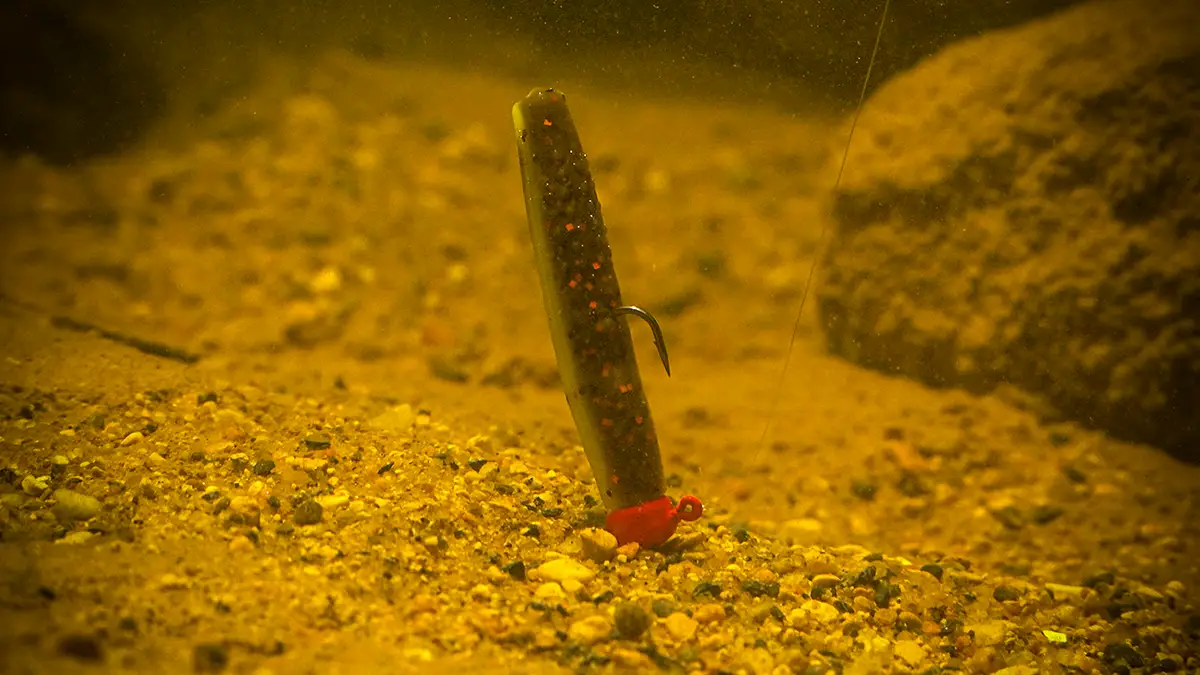
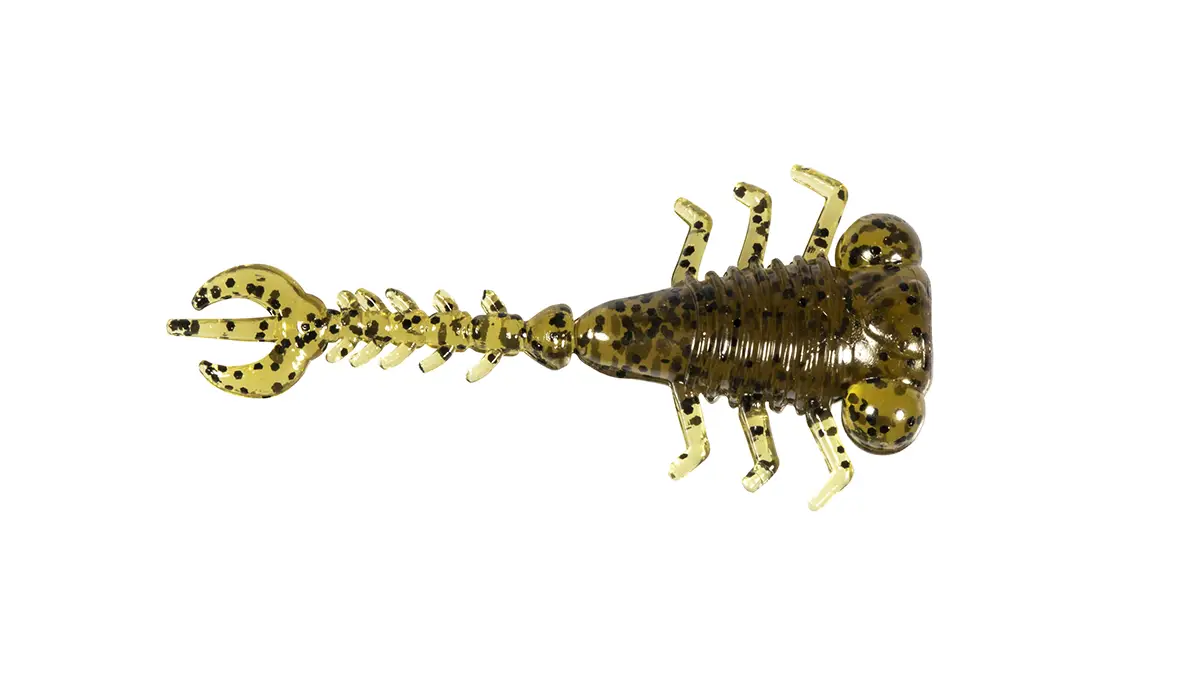

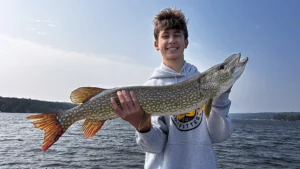
![[VIDEO] Huff’s 3 Must-Have Baits for Bass](https://www.wired2fish.com/wp-content/uploads/2025/11/huff-website-300x169.webp)
